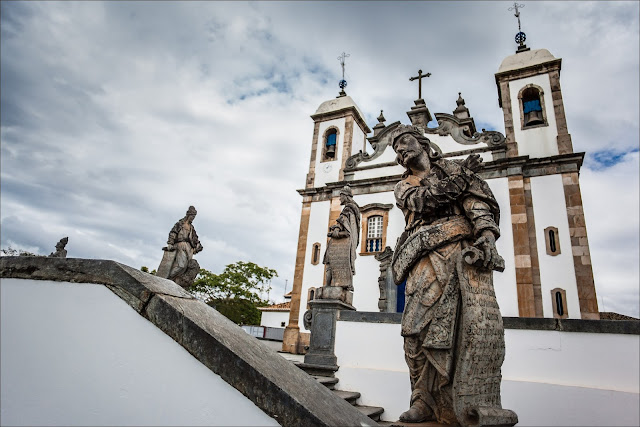Congonhas (Congonhas do Campo) is another historical Brazilian city located in the state of Minas Gerais. It is situated 90 kilometres (56 mi) south from Belo Horizonte, the capital of state of Minas Gerais, by the highway BR-040. The city has a population of 50,000. The city is known for its basilica - the Santuário do Bom Jesus do Matosinhos - and associated soapstone sculptures which were commissioned by Portuguese adventurer, Feliciano Mendes in the 18th century. It was created by Aleijadinho, one of the best artists in the baroque style in the world. The twelve sculptures of old testament prophets around the terrace are considered one of his finest works.
In 1985 the Sanctuary was named a World Heritage Site by UNESCO.
Photos: by Google and Flickr
Sanctuary of Bom Jesus do Congonhas
Sanctuary of Bom Jesus do Congonhas
This sanctuary in Minais Gerais, south of Belo Horizonte was built in the second half of the 18th century. It consists of a church with a magnificent Rococo interior of Italian inspiration; an outdoor stairway decorated with statues of the prophets; and seven chapels illustrating the Stations of the Cross, in which the polychrome sculptures by Aleijadinho are masterpieces of a highly original, moving, expressive form of Baroque art.
















